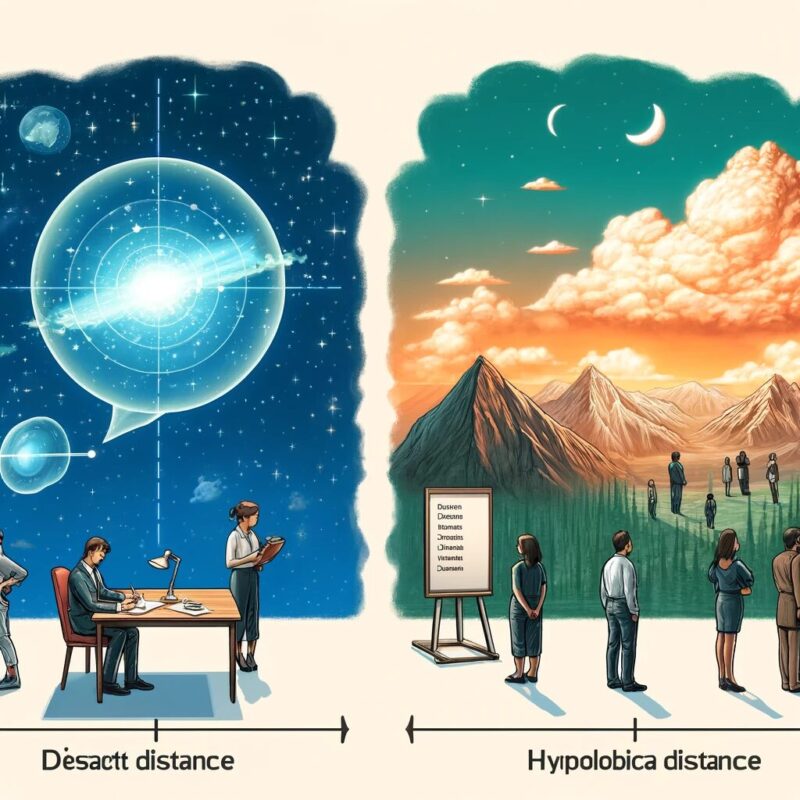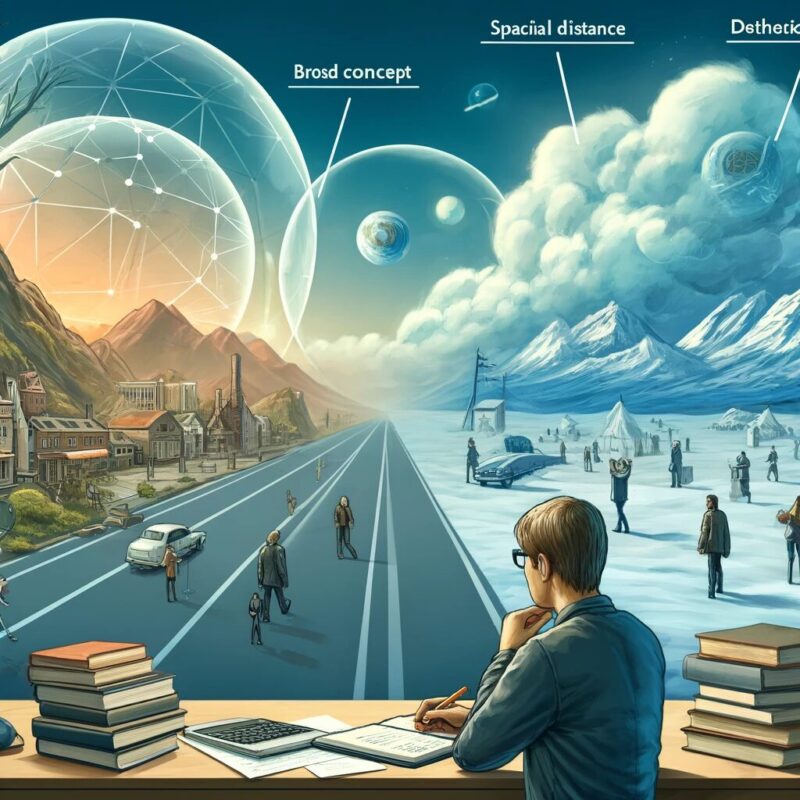Do you have questions or concerns like these?
- What is Construal level theory?
- What is a concrete example of Construal level theory?
If you’re grappling with such questions and uncertainties, this time I will clearly explain:
- Overview
- A concrete example based on my experience
Please refer to this article to deepen your understanding of Construal level theory.
What is Construal level theory?

Construal Level Theory (CLT) is a psychological theory that explains how people perceive things abstractly or concretely.
This theory focuses on how distance (temporal, spatial, social, hypothetical) affects people’s thinking and behavior.
Specifically, the further the distance, the more abstract the perception; the closer the distance, the more concrete the perception.
Temporal Distance
Temporal distance refers to how far an event or action is from the present time.
Events in the distant future are perceived abstractly, while events in the near future are perceived concretely.
For example, plans for next year are considered broadly, while plans for tomorrow are considered in detail.
Spatial Distance
Spatial distance refers to physical distance.
Distant places and people are perceived abstractly, while nearby places and people are perceived concretely.
For instance, events in a faraway city are perceived in general terms, whereas local events are perceived in detail.
Social Distance
Social distance refers to the psychological distance between oneself and others.
People and groups close to oneself are perceived concretely, while distant others or different groups are perceived abstractly.
For example, a friend’s actions are understood concretely, while a stranger’s actions are perceived through general characteristics.
Hypothetical Distance
Hypothetical distance refers to the degree of feasibility or reality.
Things that are difficult to achieve are perceived abstractly, while things that are easy to achieve are perceived concretely.
For instance, dreams and ideals are perceived abstractly, while everyday tasks are perceived concretely.
Applications
This theory provides important insights in marketing, consumer behavior, and decision-making.
For example, advertising messages can be adjusted according to the psychological distance of the target customers to be more effective.
What is a concrete example of Construal level theory?

Research Activities as a Graduate Student
As a graduate student, I utilize Construal Level Theory to conduct research in marketing and consumer behavior.
Understanding this theory allows me to gain deeper insights into consumer decision-making processes and design effective marketing strategies.
Daily Learning
For instance, I apply the concept of temporal distance to plan my long-term research projects.
I perceive distant future research goals abstractly and set broad directions, while I create concrete action plans for tasks in the near future.
This approach helps me progress efficiently in my studies.
Communication with Family
Considering spatial distance has also improved my communication with family members.
With family members living far away, I share general topics and broad plans, while discussing detailed matters with those who live nearby.
This ensures smooth information sharing.
Understanding Social Distance
In terms of social distance, I use this understanding to interact with friends and colleagues from different backgrounds.
I provide concrete advice to close friends, while offering abstract opinions to those with whom I have a more distant relationship.
This facilitates appropriate communication.
Applying Hypothetical Distance
Moreover, I distinguish between feasible and challenging goals using hypothetical distance.
I perceive difficult-to-achieve goals abstractly, maintaining a broad vision, while setting concrete steps for feasible goals.
This balance helps me stay motivated and work towards achieving my objectives.
Conclusion
Construal Level Theory is an invaluable tool in my daily life and research activities.
By leveraging this theory, I can make more effective decisions and enhance my adaptability in various situations.
This article uses material from the Wikipedia article “Construal level theory” which is released under the Creative Commons Attribution-Share-Alike License 4.0. Additionally, the texts and images were generated using ChatGPT.


